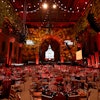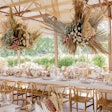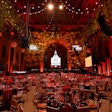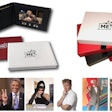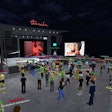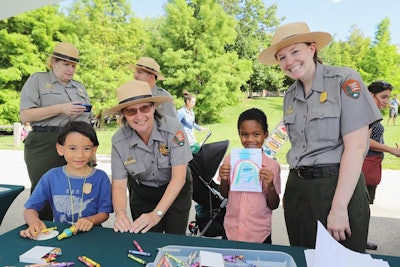
This year marks the 100th anniversary of the National Park Service (N.P.S.), and today is its official birthday. According to the service, more than 307 million people—a record number—visited national parks in 2015, and even more are expected this year. Here are tips for planners who want to host successful events at national parks in the centennial year and beyond.
1. Make sure the event’s agenda is compatible with the park.
Donald Leadbetter, partnership coordinator for the N.P.S. Centennial Office, recommends that planners “thoroughly look over the website of the specific park where you're interested in holding an event. Many parks have posted information about applying for permits and other critical information, so do your research and get to know the geography and facilities of the park while you're at it.”
One way that many events have shared the N.P.S.'s message is through the #FindYourPark movement, an official centennial campaign created by the National Park Foundation—the N.P.S.'s charitable partner. Several park events this year have incorporated the hashtag into decor and social media.
2. Decide if the event will be produced in conjunction with the park or independently.
National parks are owned by the federal government and managed by the park service. The spaces are available for private events—notable ones include Tina Brown’s over-the-top launch of Talk magazine at the Statue of Liberty in 1999—but they come with their own set of restrictions and, in some cases, exclusive vendors.
But park staff can assist for independently produced events, too. "Ask for advice from the park staff," Leadbetter says. "They have experience and can guide the way."
3. Choose outdoor events carefully.
With the majority of park events taking place outdoors, planners should explore back-up plans to minimize risks such as weather issues.
The park service itself plans events outdoors, like one Monday in which the National Park Foundation joined in a celebration of the centennial with an outdoor event at Brooklyn Bridge Park. From across the East River, attendees could control the color of the One World Trade Center Spire—a first—by working to solve interactive puzzles on a giant digital circuit board. In addition, the Statue of Liberty's webcam of New York Harbor offered views of the action for anyone who couldn’t attend. Bill Nye and Questlove were among the celebrities who joined U.S. Secretary of the Interior Sally Jewell at the event.
“The lighting of One World Trade presented us with conceptual challenges that far surpassed the plethora of technical dead ends, logistical issues, and creative design challenges,” says David Jacobsen of Grey New York, the advertising, activation, and public-relations agency for the #FindYourPark campaign. “Our challenge was creating an experience that could bear the weight of the centennial of the National Park Service.”
4. Work with the right sponsors and other strategic partners.
At the Brooklyn Bridge Park event, sponsor American Express and its nonprofit partner Games for Change hosted an interactive experience showcasing the new iOS game Save the Park. Subaru of America was also onsite to raise awareness for its National Park Zero-Landfill initiative to reduce waste at national parks; the initiative includes Subaru collecting caps from soft drinks and water bottles to be recycled into a donated park bench. The Coca-Cola Company showcased its partnership with the National Park Foundation by highlighting the Active Trails initiative to get community members outdoors and into parks. In addition, local business Brooklyn Ice Cream Factory presented an ice-cream social at the event.
“We needed the right partners and they had to be far beyond ‘the right fit’—they had to be perfect," Jacobsen says. "Strategic nuance, technical reliability, conceptual editing, and above all, careful messaging, were among the many tools we used when faced with challenges that come from creating authentic and strategic partnerships.”
5. Consider the impact of tourists.
Because tourists make up a significant portion of visitors to national parks, they could potentially affect private events. Even if the event is not open to the public, crowd control and traffic could be affected by the number of park attendees who are near the event. If walk-up attendees are welcome, then contacting the local tourism board and nearby hotels for outreach tips could give planners a marketing edge to attract more guests.
6. Take advantage of tech and eco-friendly amenities.
Despite their rugged surroundings, many national parks offer modern amenities. In 2015, Yosemite National Park in California awarded the service company Aramark a 15-year contract to become the park’s official hospitality provider and manager—working under the Aramark subsidiary Yosemite Hospitality, which oversees such park events as the annual Taste of Yosemite culinary showcase. Yosemite Hospitality plans to bring several improvements to the park, including the use of smartphones and kiosks for reservations, as well as for paying for food and other services. In addition, Yosemite Hospitality plans to remove plastic bottled water for sale on store shelves and within dining areas, and replace them with filtered water dispensers, bottle filling stations, and boxed or canned water. A visitor vehicle-charging station will also be installed in order to reduced the park's carbon footprint.



